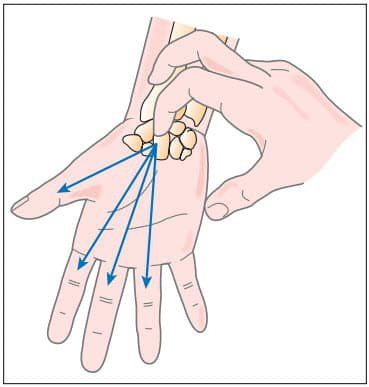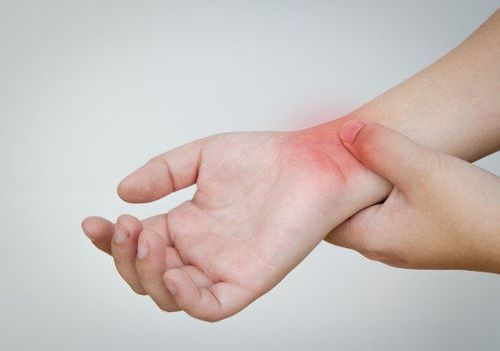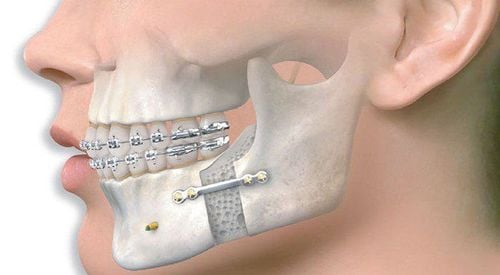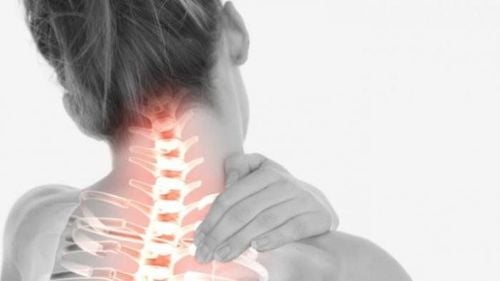This is an automatically translated article.
Post-traumatic wrist joint pain is a condition that occurs when the wrist is affected by various health problems. The condition of the wrist joint pain often appears initially as red swelling in the wrist area and accompanied by uncomfortable painful sensations. Wrist pain is usually caused by an injury.
1. What is wrist pain?
The wrist is made up of many small interlocking joints responsible for keeping the arm and hand stable, supporting the bones of the hand, forearm to work more flexibly. Wrist pain occurs when the wrist is affected by many different health problems, or due to performing many tasks, so the wrist joint is very vulnerable.

Khớp cổ tay là bộ phận quan trọng dễ bị tổn thương
2. Causes of wrist joint pain
Some causes of wrist joint pain include:
Wrist pain due to physical trauma: When the wrist is suddenly impacted with strong force, it will lead to wrist pain. In the most common case is when we fall and by instinct we will raise our arms to support so that the body does not hit the ground. Depending on the severity of the impact, the condition of the wrist can be damaged such as dislocation, sprain or even fracture or fracture of the joint. Injuries when playing sports: People who practice sports, especially sports that require flexibility and strength from the arms or hands will be very susceptible to injury. Injuries to the bones and joints increasingly make patients suffer from arthritis, causing pain in the wrist and surrounding joints.

Đau xương khớp cổ tay có thể xảy ra khi vận động mạnh hoặc chơi thể thao.
3. Diagnosis of wrist joint pain after injury
After an injury, to diagnose wrist osteoarthritis pain, the doctor will first do a general examination by performing a physical examination:
Check for symptoms, swelling, pain and deformity at the wrist. . Ask the patient to move the wrist to check its range of motion. Assess hand grip and arm strength. Besides, some laboratory tests need to be done, including:
X-ray: Look for signs of fracture or degeneration. CT scan: Compared to an X-ray, a CT scan provides a more detailed picture of the wrist bones and from there the doctor can detect fractures that don't show up on an X-ray. MRI scan: Uses a strong magnetic field and radiofrequency to create detailed images of the wrist bones and surrounding soft tissues. Ultrasound: Assists specialists in assessing the health of ligaments, tendons and cysts if present.
4. Methods of treating wrist joint pain
Osteoarthritis pain in the wrist can be treated with a variety of methods. In order to improve the best possible treatment effect, the doctor will develop a treatment plan for each case based on the following factors:
Causes of painful wrist joints Pain location Severity of injury injury Age The health status of the patient.
4.1 Drug use
In most cases of wrist joint pain, the doctor will prescribe pain relievers to reverse the uncomfortable symptoms. Common pain relievers are paracetamol and ibuprofen. In addition, patients should also pay attention to exactly follow the doctor's instructions about taking the drug (dose, time of use, ...) to limit the risk of complications such as ulcers. stomach, impaired kidney function, liver, ... due to the side effects of the drug.

Thuốc giảm đau có thể được bác sĩ kê đơn cho người đau xương khớp cổ tay
4.2 Therapies
In case the wrist bone is cracked or slightly broken, the doctor will straighten the bone fragments into the correct position and let the body heal itself. At this point, the patient may need a cast or brace to immobilize these bones until the wrist bone heals completely.
Besides, wearing a brace for patients with osteoarthritis of the wrist can also be beneficial for wrist pain caused by stretching, spraining or tearing ligaments. The brace helps to limit the wrist movement during movement, facilitating the early recovery of the injury here. Physical therapy is another popular treatment for mild wrist osteoarthritis. In addition, patients with pain in the wrist joint that need surgery should also perform these exercises to restore wrist function.
4.3 Surgery
Most wrist pain is treated medically. Surgery is the treatment of last resort when other treatments fail. Cases that need surgical treatment include:
Severe wrist fracture: The doctor conducts surgery to reconnect the bone segments with specialized metal rods. Rupture of a ligament or tendon: This is a serious condition and requires surgery to reattach broken bands of tissue.
5. Preventing injuries that cause wrist joint pain
The events that can cause a wrist injury are varied and cannot be prevented all. However, there are some methods to prevent wrist joint pain:
Strengthening bones and joints: Adults need to absorb 1,000mg of calcium per day to ensure the best bone and joint health possible. In addition, for women 50 years of age and older, the calcium content will need to increase to 1,200mg.

Đảm bảo một chế độ ăn cân bằng giúp tránh khả năng đau xương khớp cổ tay
Fall prevention: Patients can actively prevent falls by walking carefully, choosing appropriate footwear and keeping the house tidy. Make sure the light in the house is enough for you to see the road clearly. In addition, you can also install more handrails in many different places in the house such as stairs or in the bathroom if necessary. Wear protective clothing according to regulations at work or when practicing and competing in sports. In summary, post-traumatic wrist osteoarthritis pain is a common condition commonly seen in active people such as tennis players, long-distance drivers, luthiers, industrial tailors. To prevent wrist joint pain, it is necessary to wear protective clothing in accordance with regulations at work, and supplement calcium to promote bone and joint health.
In the unfortunate case of joint pain after an injury, the patient needs to go to a medical facility for a thorough examination and evaluation for appropriate treatment. Currently, Vinmec International General Hospital is a prestigious address trusted by many patients in performing diagnostic techniques for musculoskeletal diseases. When visiting Vinmec Medical System, customers will receive:
The medical team - doctors are leading experts, highly qualified, dedicated and wholeheartedly for the benefit of the patient. Comprehensive and professional medical examination, consultation and treatment services. The system of modern equipment, supports effective diagnosis and treatment. Modern, civilized, luxurious and sterile medical examination and treatment space. Fully guarantee the safety and privacy of customers. Modern, efficient and effective model for managing, sharing and connecting information online.
Please dial HOTLINE for more information or register for an appointment HERE. Download MyVinmec app to make appointments faster and to manage your bookings easily.













